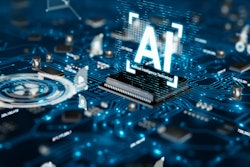
As artificial intelligence has expanded capabilities in chatbots and natural language programs, such as ChatGPT, AI and machine learning, innovations have grown across manufacturing and supply chain operations. New solutions are being used to leverage AI data analysis and insights in logistics, supply chain and manufacturing operations to increase efficiency, provide real-time visibility and jump-start workflow processes.
As organizations consider how to integrate and deploy AI throughout the supply chain, it is important to consider future needs and uses of automation in business operations. Here are three points to consider when integrating AI into your business operations.
Understand That Integration is an Investment to Create More Value, Not a Quick Fix to Cut Costs
Despite common misunderstandings, AI implementation does not always provide a quick fix for workforce challenges. Organizations that are already struggling to acquire and retain talent or are looking to automate parts of their business may not realize immediate gains by deploying AI solutions. However, with proper planning, AI can significantly improve efficiencies.
Realizing the benefits of AI solutions requires significant investments and a team in place to successfully deploy and integrate the technology, such as managing the consolidation of data, deploying and supporting the applications and monitoring the quality of the AI output. As such, buy-in for AI investments must come from leaders at all levels of the business and is crucial in ensuring that resources are in place for the full lifecycle of the AI-enhanced process or product. While it takes time, a successful integration will allow businesses to shift more of their operations to AI, allowing the workforce to focus their time on other value-generating business needs.
Harness AI for Predictive Insights on Product Availability and Consumer Behavior
Due to the vast amounts of product information available, consumers are making more informed purchasing decisions and doing so earlier, often without a specific retailer in mind. Largely gone are the days of browsing a store, whether online or in-person, and making impulse purchases. The variable purchasing decision tends to be where to buy the product as opposed to what product to buy. The retailers often winning customers are the ones who have the desired product in stock and can meet the customer’s timeframe for receiving it. According to a 2021 McKinsey report, more than 90% of consumers see two- to three-day delivery fulfillment as the baseline, with 30% of shoppers expecting same-day delivery.
Implementing AI can enable retailers and their suppliers and manufacturers to gain a head start on ensuring products are available when and where customers shop. By analyzing data on purchasing history, customer information and supply chain movement, AI can enable retailers to predict customers' purchasing habits and secure inventory ahead of demand. These same insights can also power automation for raw material acquisition and job prioritization within the manufacturing facilities to accelerate production.
Leverage AI to Streamline and Elevate Production Quality
It took almost 50 years for innovators to shrink data storage devices to fit into a pocket. Now, ChatGPT can write a complete application, in the language of your choosing, and deploy it to the cloud in a matter of minutes. Faster networks with higher bandwidth mean the possibility of more connected devices. More connected devices mean more data and higher data storage requirements. The International Data Corporation (IDC) predicts that by 2025, more than 41 billion Internet of Things (IoT) devices will be connected, generating nearly 80 zettabytes of data (there are one billion terabytes in a zettabyte). And with technologies such as Wi-Fi 6 and 5G empowering deployments of IoT, data lakes are filled with rich, actionable information. These vast amounts of data are powering Industry 4.0, the Fourth Industrial Revolution, which is bringing speed, automation and data-driven decision-making to businesses across the globe.
As the industrial sector continues to deploy AI, computer vision and machine learning, this data is being used to produce higher-quality goods more effectively and at lower operating costs. AI is now trusted to autonomously handle tasks like flaw detection and predictive maintenance needs within factories. As expertise in AI development within the industrial sector continues to grow, the next stage of AI adoption will likely bring new applications and robotics to improve manufacturing operations and automate more complicated and creative tasks, such as designing products and identifying inefficiencies in manufacturing runs.
As AI solutions continue to advance the manufacturing space, the speed at which products can be designed, tested, produced, sold, purchased, deployed and enjoyed will soon be a fraction of what it was just five years ago. When successfully and thoughtfully integrated, AI solutions can solve critical infrastructure challenges, leverage growing data and secure the supply chain for the future.




![Top Tech Logo Vertical [color]](https://img.sdcexec.com/files/base/acbm/scn/image/2023/12/top_tech_logo_Vertical__color_.656e286049642.png?auto=format%2Ccompress&fit=crop&h=167&q=70&w=250)












![Pros To Know 2026 [color]](https://img.sdcexec.com/mindful/acbm/workspaces/default/uploads/2025/08/prostoknow-2026-color.mduFvhpgMk.png?ar=16%3A9&auto=format%2Ccompress&bg=fff&fill-color=fff&fit=fill&h=135&q=70&w=240)

